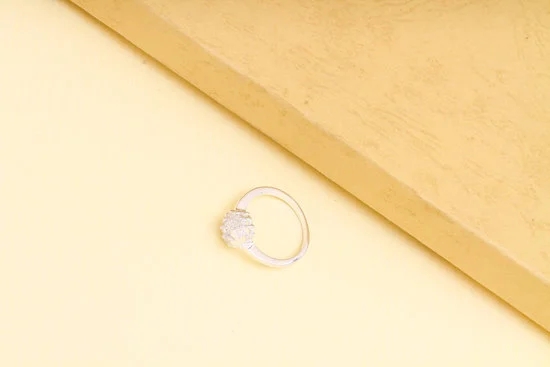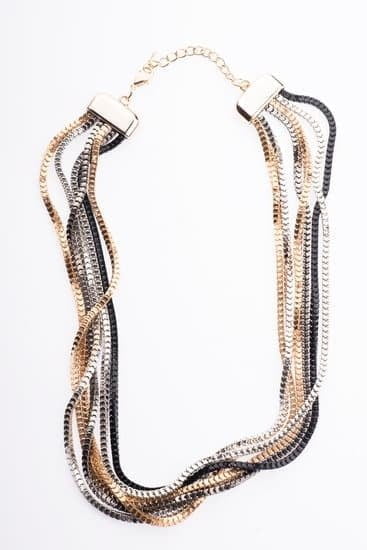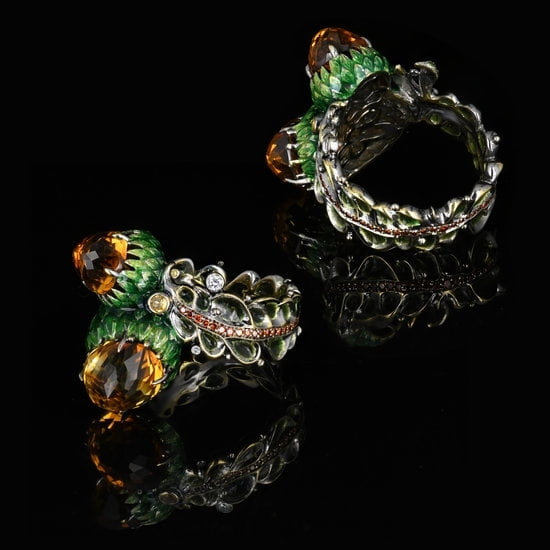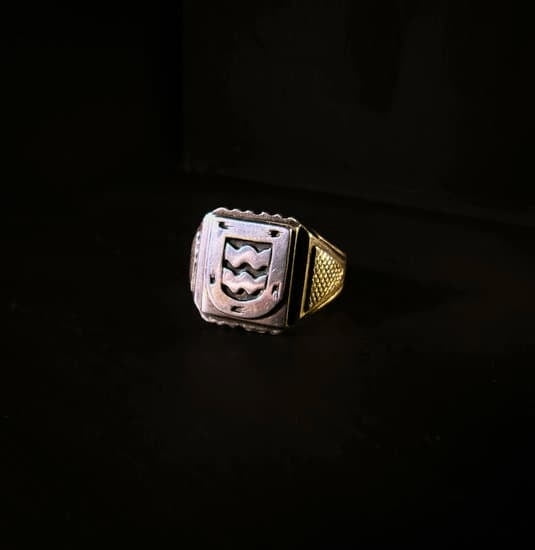Are you interested in learning how to solder gold jewelry? Soldering is an essential skill in jewelry making, especially when working with precious metals such as gold. This process allows for the joining of metal components to create stunning and intricate designs. In this article, we will provide you with a comprehensive guide on how to effectively solder gold jewelry, covering everything from the tools and materials needed to troubleshooting common issues.
Before diving into the technical aspects of soldering gold jewelry, it’s important to understand the significance of this process in the world of jewelry making. Soldering plays a crucial role in creating durable and high-quality pieces by securely joining different parts together. Whether you are a beginner or an experienced jeweler, mastering the art of soldering is essential for achieving professional-looking results.
In this introductory section, we will provide a brief overview of the soldering process to pique your interest and highlight the importance of mastering this skill. As we delve deeper into the article, we will cover various aspects such as tools and materials needed, preparation and safety measures, choosing the right solder, soldering techniques, troubleshooting common issues, finishing and polishing, and additional resources for further learning.
Stay tuned for valuable insights that will help you become proficient in soldering gold jewelry.
Tools and Materials Needed
Soldering gold jewelry requires a specific set of tools and materials to ensure a successful and professional-looking result. Here, we will discuss the essential items needed for this process, as well as provide some tips on where to find them.
Essential Tools
The first step in soldering gold jewelry is to gather all the necessary tools. This includes a jeweler’s torch, soldering pick or tweezers, heat-resistant surface or firebrick, soldering board or pad, and flux. Additionally, small metal clamps or third hands can be helpful for holding pieces together during the soldering process. It’s important to invest in high-quality tools to ensure precision and safety during the soldering process.
Materials Needed
In addition to the tools mentioned above, there are several materials required for soldering gold jewelry. These include gold solder appropriate for the karat of the gold being used, as well as the metal being joined. It’s also essential to have access to clean water for quenching hot metals, as well as a pickle solution for cleaning the pieces after soldering. Lastly, polishing compounds and equipment will be necessary for finishing the jewelry after it has been soldered.
Finding Materials
When it comes to sourcing these tools and materials, there are several options available. Many jewelry supply stores carry everything needed for soldering gold jewelry, from torches and flux to various types of solders.
Online retailers also offer a wide selection of specialized tools and materials specifically designed for jewelry making. For those looking to save costs or get creative with their tool choices, there are also DIY options such as building your own heat-resistant work surface or creating makeshift third hands using household items.
By having all the necessary tools and materials on hand before beginning the soldering process ensures that one can focus on perfecting their technique without any interruptions due to missing items or inadequate supplies.
Preparation and Safety Measures
Soldering gold jewelry requires careful preparation and adherence to safety measures to ensure a successful and hazard-free experience. Before beginning any project, it is essential to set up a dedicated work area for soldering. This area should be well-ventilated and free of any flammable materials. It is also important to have a fire extinguisher nearby in case of emergencies.
To prepare the work area, start by ensuring that the soldering surface is stable and heat-resistant. A soldering board or firebrick can be used as a base to protect your work surface from damage. Additionally, consider using a fume extractor or wearing a respirator if ventilation is limited to prevent inhaling harmful fumes during the soldering process.
When working with high temperatures, it’s crucial to protect yourself from potential burns or injuries. Wear heat-resistant gloves and safety glasses to shield your hands and eyes from hot metal and flying debris. Furthermore, avoid wearing loose clothing or accessories that could potentially catch fire.
Taking these preparation and safety measures seriously can help prevent accidents and ensure a smooth soldering process, allowing you to create beautiful gold jewelry without compromising your wellbeing.
| Preparation Steps | Safety Measures |
|---|---|
| Set up a dedicated work area for soldering | Ensure proper ventilation and use a fume extractor or respirator |
| Use a stable and heat-resistant surface such as a soldering board or firebrick | Wear heat-resistant gloves and safety glasses |
| Have a fire extinguisher nearby in case of emergencies | Avoid wearing loose clothing or accessories that could catch fire |
Choosing the Right Solder
When it comes to soldering gold jewelry, choosing the right solder is crucial for achieving a strong and clean bond. There are different types of solder available, each with its own melting point and composition. Here is a detailed outline of the different types of solder suitable for gold jewelry:
- Soft Solder: Soft solders are alloys that melt at relatively low temperatures, making them ideal for delicate gold pieces. They are often composed of tin, lead, and other metals.
- Hard Solder: Hard solders have a higher melting point compared to soft solders, providing a stronger bond for more durable jewelry pieces. They are typically made of silver, copper, and zinc.
When selecting the correct solder for your specific project, it’s important to consider the karat of the gold being used. Different karats require different solders due to their varying melting points. For example:
- For 10k or 14k gold, soft solders with lower melting points are recommended to prevent damage to the metal.
- For 18k or higher karat gold, hard solders are typically used to ensure a secure bond between the components.
Before purchasing any type of solder, it’s advisable to consult with experienced jewelers or suppliers who can provide guidance based on the specific requirements of your project.
Understanding these distinctions in solder types and their suitability for different karats of gold will ensure that you achieve successful and lasting solder joints in your jewelry pieces.
Soldering Technique
Soldering gold jewelry requires a specific technique to ensure a strong and durable bond between the pieces being joined. Whether you’re creating a new piece or repairing an existing one, mastering the soldering technique is essential for any jewelry maker. Below are detailed steps on how to properly solder gold jewelry:
- Step 1: Prepare the work area – Before starting the soldering process, it’s crucial to prepare your work area. Make sure the surface is clean and free from any flammable materials. Set up a soldering station with a fireproof block or charcoal block to support the pieces being soldered.
- Step 2: Flux application – Apply a small amount of flux to both surfaces that will be joined together. The flux helps prevent oxidation and ensures that the solder flows smoothly during the heating process.
- Step 3: Positioning the pieces – Place the pieces of gold jewelry in their desired position for soldering. Use tweezers or third-hand tools to hold the pieces in place while heating.
- Step 4: Heating and solder application – Use a torch to apply heat evenly to the joint area. Once the metal reaches the correct temperature, touch the end of the solder wire to where the joint meets, allowing it to flow into and fill the gap.
- Step 5: Cleaning and inspection – After soldering, allow the metal to cool before cleaning off any excess flux residue. Inspect the joint for any imperfections and re-solder if necessary.
Learning how to execute these steps with precision is crucial for achieving clean, precise solder joints when working with gold jewelry. Controlling heat, proper flux application, and careful positioning are all key factors in mastering this technique.
If you encounter issues such as uneven heating or difficulty getting the solder to flow correctly, troubleshooting these problems is essential for successful soldering.
Remember that practice makes perfect when it comes to mastering any technique in jewelry making, including soldering gold jewelry. With patience and persistence, you can achieve professional-looking results in your projects.
Troubleshooting Common Issues
Uneven Heating
One of the most common issues encountered when soldering gold jewelry is uneven heating, which can result in incomplete or messy solder joints. To address this issue, it is important to ensure that the heat source, whether it’s a torch or a soldering iron, is evenly distributed across the entire piece of jewelry.
One helpful tip is to move the heat source around the piece in a circular motion to prevent hot spots and ensure uniform heating. Additionally, using a larger flame or higher temperature setting can help distribute heat more evenly.
Solder Not Flowing Correctly
Another frustrating problem that may arise during the soldering process is when the solder does not flow correctly. This can result in weak joints and an unsightly finished product. To troubleshoot this issue, it’s important to make sure that the metal surfaces being joined are clean and free of any contaminants such as dirt, grease, or oxidation.
Using a flux can also aid in promoting proper flow of the solder by preventing oxidation during the heating process. If these steps do not solve the problem, reevaluating the type and composition of the solder being used may be necessary.
Overheating and Discoloration
Overheating gold jewelry during the soldering process can lead to discoloration and potentially damage the piece. To avoid this issue, it’s crucial to carefully control the temperature and duration of heating. Using a lower temperature for a longer period of time can help minimize overheating while still allowing for proper flow of the solder. Additionally, protecting any delicate gemstones or heat-sensitive parts of the jewelry with heat-resistant materials can help prevent damage from excessive heat exposure.
Finishing and Polishing
Once you have successfully soldered your gold jewelry, the next step is to finish and polish it to achieve a professional and flawless final product. This process is crucial in bringing out the shine and luster of the jewelry, ensuring that it looks its best when worn.
To start, make sure the soldered piece is clean and free from any debris or dirt. Use a soft brush or cloth to gently remove any excess flux or residue left from the soldering process. Once the piece is clean, you can begin with the finishing process.
One popular method for finishing gold jewelry is tumbling. Tumbling involves placing the jewelry in a barrel or container along with stainless steel shot and a cleaning or burnishing solution. The barrel is then rotated, causing the shot to rub against the pieces, effectively burnishing and polishing them. This method is effective in removing any remaining scratches or blemishes on the surface of the jewelry and giving it a smooth finish.
Another common technique for finishing and polishing gold jewelry is hand polishing using a jeweler’s rouge or polishing compound. This involves applying the compound onto a soft cloth or wheel and then rubbing it onto the jewelry in circular motions. The compound helps remove any surface imperfections, leaving behind a shiny and polished finish.
| Tools & Materials | Explanation |
|---|---|
| Soft brush/cloth | Used to remove excess flux or residue after soldering |
| Tumbling barrel | For tumble-finishing jewelry by rotating with stainless steel shot |
| Jeweler’s rouge/polishing compound | For hand polishing to remove surface imperfections on gold jewelry |
Final Thoughts and Additional Resources
In conclusion, mastering the art of soldering gold jewelry is a valuable skill for any jewelry maker. Soldering allows for the creation of intricate and durable pieces that will stand the test of time. By following the detailed steps outlined in this article, and taking into account the tips and advice provided, you can achieve clean, precise solder joints and create professional-quality gold jewelry.
Remember that preparation and safety measures are crucial before beginning any soldering project. Taking the time to set up your work area properly and using appropriate safety equipment will ensure a smooth and hazard-free experience. Additionally, choosing the right solder and understanding the different types available for gold jewelry is key to achieving successful results.
As a final note, don’t be discouraged by any troubleshooting issues that may arise during your soldering process. With patience and practice, you can learn how to overcome common problems such as uneven heating or solder not flowing correctly. And remember, there are always additional resources available for further reading or guidance on how to solder gold jewelry, so continue to seek out knowledge and improve your skills in this rewarding craft.
Frequently Asked Questions
What Kind of Solder Do You Use for Gold Jewelry?
When soldering gold jewelry, it’s important to use solder that is specifically formulated for gold. Gold solder is available in different karats to match the purity of the gold being worked on.
For example, if you are working with 14k gold, you should use 14k solder. Using a compatible solder ensures a strong bond and avoids discoloration or other issues.
Will Regular Solder Stick to Gold?
Regular solder typically won’t stick to gold very well, especially if the gold has a higher karat purity. This is why it’s important to use solder that is specifically made for use with gold. Gold solder is formulated to create a strong bond with the gold without causing damage or discoloration.
Can You Solder 10k Gold to 14k Gold?
It is possible to solder 10k gold to 14k gold, but it requires using the appropriate type of solder. You’ll need to use a lower-karat solder that matches the lowest karat of the two gold pieces being joined – in this case, 10k.
By using the right type of solder and following proper techniques, it’s feasible to successfully join different karats of gold together through soldering.

Welcome to my jewelry blog! My name is Sarah and I am the owner of this blog.
I love making jewelry and sharing my creations with others.
So whether you’re someone who loves wearing jewelry yourself or simply enjoys learning about it, be sure to check out my blog for insightful posts on everything related to this exciting topic!





